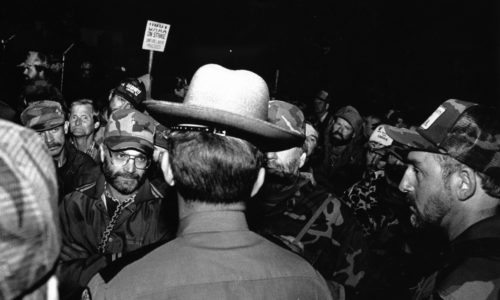United Mine Workers of America History
Throughout the annals of American labor history, the United Mine Workers of America (UMWA) has held an undisputed leadership position. The UMWA spearheaded the crusade to establish collective bargaining within the realm of American industrialization during the 20th century. Its guiding principles, unwavering policies, solidarity, and exceptional leadership have served as a wellspring of inspiration for countless generations of working families over a span of 129 years. The rich tapestry of the UMWA’s history stands as a testament to the resolute determination embedded within the hearts and minds of North American mine workers, aimed at constructing and upholding a robust and enduring union.

The inception of the United Mine Workers of America dates back to 1890, when it united forces with the National Progressive Union of Miners and Mine Laborers, along with the Knights of Labor Trade Assembly No. 135. In 1897, a formidable assembly of 10,000 union members from Illinois, Indiana, Ohio, and Pennsylvania embarked on a strike to secure improved working conditions and wages. This labor action persisted for a little over two months and would tragically be remembered as the Lattimer Massacre, claiming the lives of 19 individuals. John Mitchell, a prominent figure, negotiated a groundbreaking national agreement pertaining to bituminous coal, culminating in an eight-hour workday and effectively ending the strike.
The year 1902 witnessed a pivotal moment when anthracite owners rejected a fresh contract, prompting miners to engage in a 10-month-long strike. This marked the initial instance where the United States government recognized a labor union as a representative entity for collective bargaining on behalf of workers. At the helm during this time was UMWA President John Mitchell, who succeeded in securing an eight-hour workday for laborers. By 1912, the dire working conditions in Paint Creek, West Virginia fueled a strike, as workers rallied for a new contractual agreement. The movement extended to Cabin Creek, West Virginia after the coal company enlisted Baldwin-Felts guards. Notably, the UMWA, along with the influence of figures like Mother Jones and the Baldwin-Felts Detectives, would become embroiled in the Colorado Coalfield War.
Tragedy struck again in 1914 during the Ludlow Massacre, a chilling event where the Colorado National Guard and company enforcers razed miners’ encampments, leading to the loss of lives, including 13 children, two mothers, and several miners. In August 1919, UMWA organizer Fannie Sellins was fatally shot by coal company guards while leading strikers in Brackenridge, Pennsylvania.

In November 1919, a prominent force and stalwart advocate for labor rights, John L. Lewis, ascended to the presidency of the UMWA, a position he held steadfastly for four decades.
The coal conflicts continued in 1920 with the Matewan Massacre in southern West Virginia, claiming 11 lives. In 1921, under the leadership of Bill Blizzard, 7,000 striking miners congregated in Marmet for a march through Logan County, organizing the southern coalfields affiliated with the UMWA. The ensuing Battle of Blair raged for five days. The following year, the Herrin Massacre unfolded in Herrin, Illinois, where 19 strikebreakers and two union miners lost their lives.
A poignant observance, Miner’s Memorial Day or Davis Day, was instituted in honor of William Davis, who was fatally shot during a protracted strike by the province’s coal miners against the British Empire Steel Corporation on June 11, 1925.
The year 1931 brought about a fierce clash between the UMWA and coal operators in Harlan County, Kentucky, resulting in a protracted and violent coal-field war that endured for nearly a decade. Additionally, in September 1931, miners in Saskatchewan initiated a strike in response to wage reductions imposed by the company. Tragically, police opened fire on a peaceful demonstration of miners and their families in Estevan, claiming the lives of three strikers.

In 1946, President Harry Truman’s intervention led to the seizure of coal mines, ultimately culminating in a contract that heralded the establishment of the UMWA Health and Retirement Funds.
The year 1968 saw the formulation of the Mine Act after a catastrophic explosion at Consolidated Coal’s Farmington #9 Mine claimed the lives of 78 miners, leaving 19 trapped. In 1972, Arnold Miller, the candidate for Miners for Democracy, was inaugurated as the President of the UMWA. In 1977, Congress passed the Federal Mine Safety and Health Act to safeguard the most invaluable resource of the mining industry – the miners.
A notable milestone occurred in 1978 with the UMWA’s first selective strike, spanning 110 days. One of the most remarkable UMWA strikes unfolded in 1989, uniting 50,000 individuals across 11 states in an assertion of civil disobedience and non-violence to safeguard healthcare and retirement benefits for workers nationwide. This event, renowned as the Pittston Strike celebrated its 30th anniversary in June 2019.
In 1990, Cecil E. Roberts, a resolute advocate for working-class rights and a U.S. Army veteran, assumed the position of the 15th President of the UMWA.
For those seeking insights into specific segments of UMWA history, anticipate forthcoming information about pivotal historical occurrences, pre-UMWA coalfield conditions, and the indomitable individuals who laid the foundation and nurtured the American labor movement.


125 Years of Struggle and Glory
Click on link to watch a brief video highlighting the UMWA’s 125 years.


